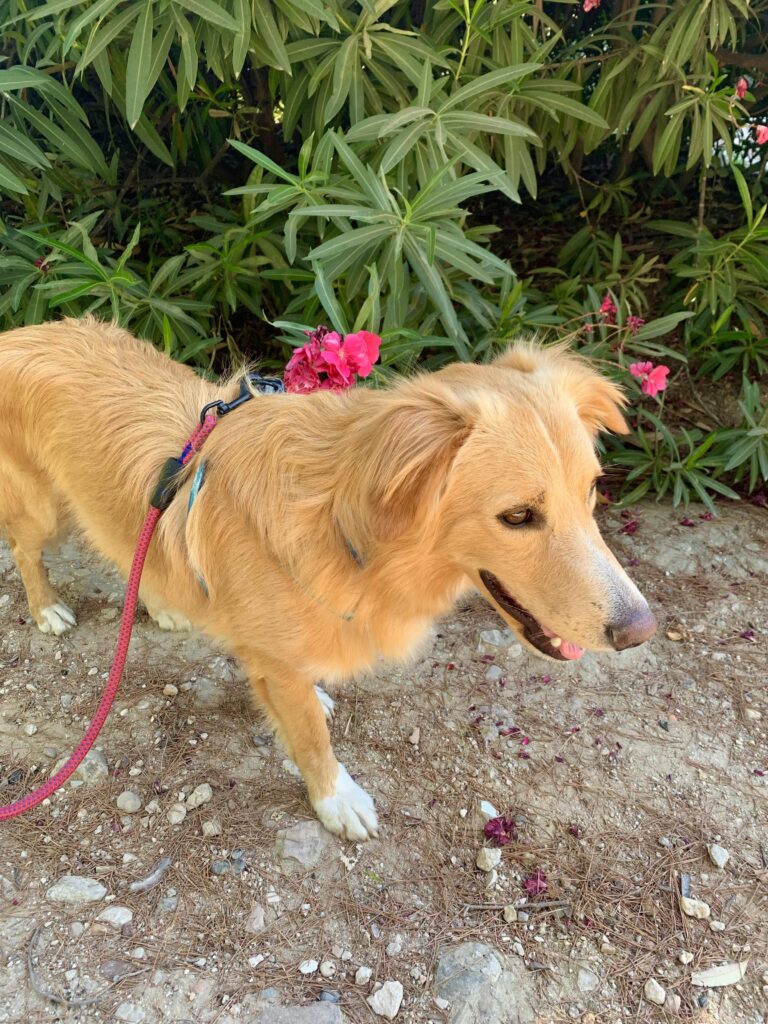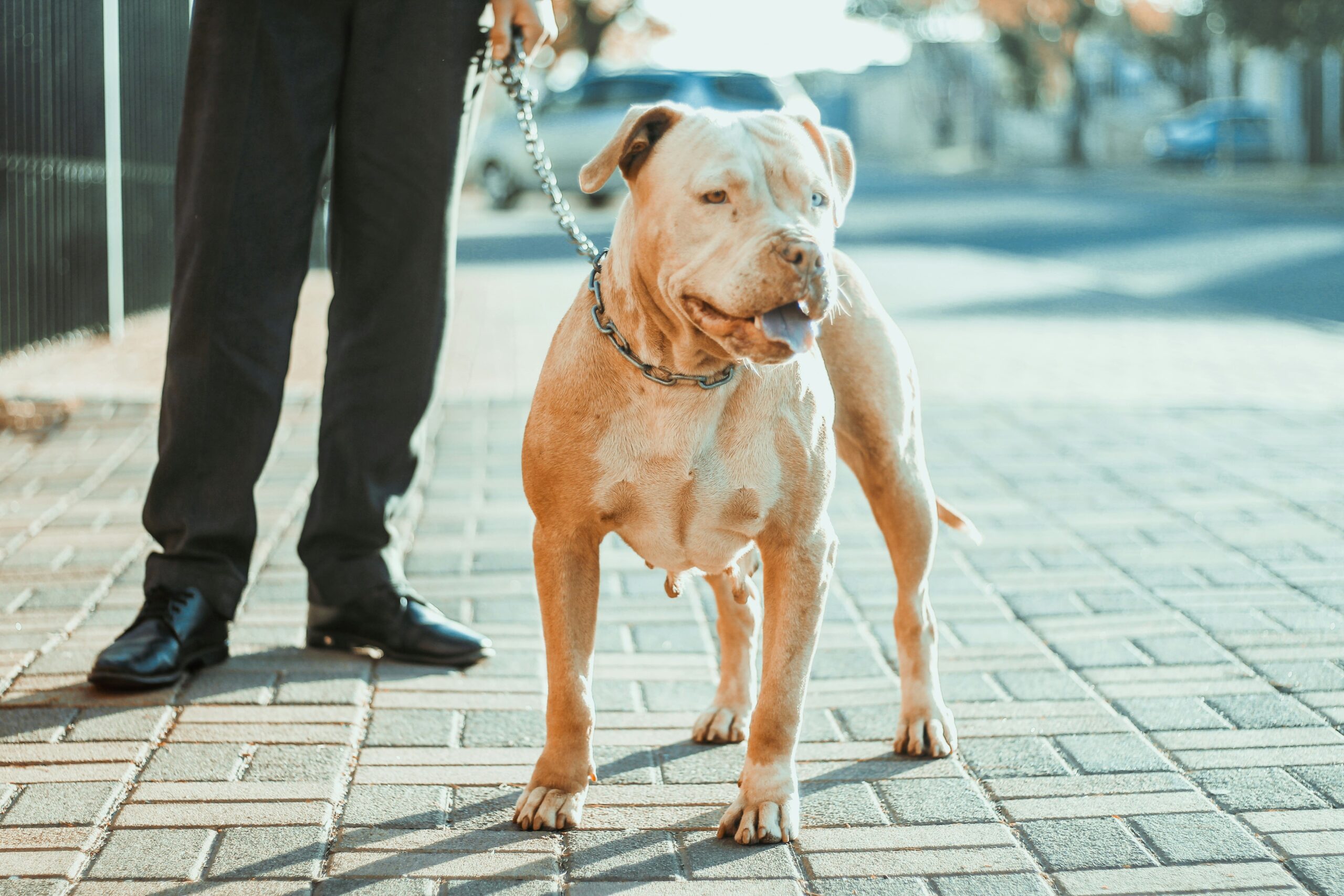For many pet owners, leash reactivity can turn outings into stressful or even chaotic events. Leash reactivity is a common issue where a dog exhibits aggressive or fearful behavior while on a leash. In this article we’ll delve into what leash reactivity is, its potential causes, and provide advice on how to train a leash-reactive dog, including desensitization techniques. 🐾
What is a Leash Reactive Dog?
A leash reactive dog is one that may not always put their best paw forward while on a leash. They might bark, lunge, growl, or exhibit other signs of anxiety or discomfort when encountering other dogs, people, or environmental triggers. This behavior often stems from a place of fear, frustration, or anxiety, which can become more pronounced when they feel constrained by the leash and perceive a lack of control over their surroundings.
Meet Rocket: Our Inspiration
If you’re reading this, you’re probably curious about leash reactivity. Let me introduce you to Rocket, a lively 2-year-old mix of Golden Retriever and Border Collie.

Rocket’s playful antics and leash reactivity inspired these articles. Recently adopted, Rocket is settling into his new life and getting comfortable with his new family.
Causes of Leash Reactivity
Understanding why your dog is leash reactive is a crucial first step toward helping them. Here are some common causes:
- Lack of Socialization: Dogs that haven’t had the chance to socialize with different stimuli during their early development stages may be more prone to fear and anxiety on walks.
- Past Negative Experiences: Traumatic or unpleasant encounters with other dogs or people while on a leash can contribute to leash reactivity.
- Fear and Anxiety: Some dogs are naturally more anxious or fearful, and the leash can amplify these emotions when faced with triggers.
- Frustration: Dogs may feel frustrated when they want to explore or greet something but find themselves physically restrained by the leash.
- Territorial Behavior: Some dogs may view the area around their home as their territory and react defensively to perceived intruders.
How to Train a Leash Reactive Dog
Training a leash-reactive dog requires a blend of compassion and patience. Here’s a step-by-step guide:
- Assess the Triggers: Begin by identifying what sets your dog off. Is it other dogs, people, bicycles, or something else?
- Maintain Distance: Start your training at a distance from the trigger where your dog remains calm and relaxed. This “threshold distance” varies for each dog.
- Teach Focus: Train your dog to focus on you using cues like “watch me” or “look.” Reward their attention with treats or praise.
- Gradual Exposure: Gradually decrease the distance between your dog and the trigger while keeping their focus and rewarding calm behavior.
- Positive Reinforcement: Always reward your dog for appropriate reactions, such as remaining calm or looking at you when encountering triggers.
- Consistency Matters: Consistency is crucial. Practice daily and steadily reduce the distance over time.
- Seek Professional Help: If progress is slow or your dog’s reactivity is severe, I recommend working with an experienced trainer to identify the reason for the leash reactivity and get personalized guidance.
In Rocket’s case, his leash reactivity is driven by frustration. When he is off the lead or in a controlled environment where he can meet other leashed dogs, he remains calm. It is in the street environment where we encounter challenges.
Desensitizing Your Leash Reactive Dog
Desensitization is a vital part of training a leash-reactive dog. It involves gradually exposing your dog to their triggers in a controlled and positive manner. Here’s how to desensitize your dog:
- Identify the Trigger: Start with the specific trigger that causes your dog’s reactivity, whether it’s other dogs, people, or something else.
- Create Positive Associations: From a safe distance, reward your dog with treats, praise, or toys to create positive associations with the trigger.
- Gradually Decrease Distance: Over time, move closer to the trigger while continuing to reward calm behavior.
- Repeat and Progress: Consistently repeat this process, gradually decreasing the distance until your dog can encounter the trigger without reacting negatively.
How Long Will Training Take?
The duration of leash reactivity training can vary widely depending on your dog’s temperament, the severity of their reactivity, and the consistency of your training efforts. While some dogs show significant improvement in a few weeks, others may require several months or more. Remember, patience and persistence are your greatest allies throughout this journey.
Rocket’s Leash Reactivity Progress

July 2023: Rocket was adopted by his new, forever family!
August 2023: 2 weeks after beginning life with his new family, Rocket began to show signs of leash reactivity. He barked at bicycles, dogs, cats and certain people.
Once Rocket’s triggers were recognised, training began! Initially Rocket’s training was focused on building positive associations. He would be given a treat and praised when he noticed a trigger but did not react. Importantly, Rocket needed to maintain a ‘safe’ distance away from his triggers, as proximity causes him to surpass his threshold leading to barking and lunging.
September 2023 – Present Day: Rocket has been progressing well and is now generally calm in the presence of people and bicycles.
Rocket’s family also learnt the importance of leash control which has seemingly helped Rocket to feel more secure when outside the home. Rocket still barks when he sees certain dogs however his distance threshold has now reduced. Initially Rocket would be triggered by dogs on the other side of the road whereas he can now observe dogs at a distance, without reacting.
FAQs
Can any dog become leash reactive? While leash reactivity can affect any dog, it is more common in those that haven’t had sufficient socialization or have experienced negative leash-related incidents.
Can aversive training methods help with leash reactivity? We strongly advise against aversive methods, as they can worsen reactivity and negatively impact your dog’s well-being. Positive reinforcement is a more effective and humane approach.
Is it possible to completely eliminate leash reactivity? While complete elimination may not always be achievable, many dogs can experience significant improvement and better manage their reactivity with the right training and support.
Should I consult a professional trainer for leash reactivity? If your dog’s reactivity is severe or progress is slow, seeking guidance from a professional dog trainer or behaviorist is highly recommended. Their expertise can make a significant difference in your dog’s training journey.
Leash reactivity is a challenge that many dog owners face, but with the right training and approach, it can often be effectively managed. Remember that each dog is unique, so tailor your training to their specific needs and be patient as you work toward a more peaceful and enjoyable walking experience for both you and your cherished furry friend.

